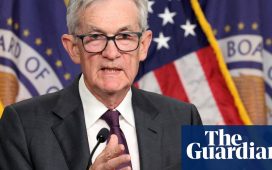Unlock the Editor’s Digest for free
Roula Khalaf, Editor of the FT, selects her favourite stories in this weekly newsletter.
The writer is a former chief investment strategist at Bridgewater Associates
Even as the US Federal Reserve debates how to navigate an approaching easing cycle, it faces another significant and potentially market-moving task: its next strategic review.
The results of the Fed’s last strategic review, announced during the pandemic in August 2020, proved unfortunately timed. Adjusting definitions of the inflation and jobs targets probably contributed to the bank’s slow reaction to rising prices. Its choices shaped the economic and financial market fallout still echoing today.
Conclusions from this next review are likely to be announced about a year from now. Given their ability to impact investors, it’s worth paying attention to deliberations along the way, including any signals from this week’s central banking conference at Jackson Hole in Wyoming. Beyond an obvious need to learn lessons from the last review, here are some areas that seem worthy of the Fed’s consideration.
Since the 2020 review, central banks in the US, Europe and Asia have been repeatedly challenged by large, sudden capital flows that put financial stability mandates at risk. For the Fed, the most notable such instance was in 2023 when Silicon Valley Bank collapsed. Partnering with other US agencies, the Fed limited contagion through measures including a new Bank Term Funding Program which offered loans to banks and other financial institutions. Officials also reviewed and adjusted bank supervision processes to identify and address vulnerabilities faster in the future.
Even with these changes, the Fed must assume that sudden capital runs can happen again, increasingly enabled by technology. A survey for the American Bankers Association showed that between 2017 and 2021, households using mobile devices as their top banking option increased from 15.1 to 43.5 per cent. The central bank doesn’t have time to react; it needs sufficient tools and processes ready in advance.
Beyond speed, there is a question around the scope of the Fed’s remit — what forces and market participants should be monitored to ensure financial stability. An obvious place to start is non-bank financial institutions, or “shadow banks”, that today capture roughly half of the world’s assets and have deep linkages with traditional banks.
The good news here is that the Fed is already conducting research on shadow banks. Of course, agreeing what should and should not be under its regulatory and supervisory remit is no easy task. But as part of this review, the Fed should at least consider if its strategy appropriately accommodates macro and market forces that arise from the growth of non-bank financial institutions.
Another question of scope centres on climate. Fed leaders have stated the central bank is not the right organisation to target climate, especially as an explicit policy goal. That said, the rising number of extreme weather events is causing billions of dollars in damage each year. And there are more lasting economic implications. The Fed gets this, and in May released the findings of a climate scenario analysis it conducted with six large US banks last year. Officials should consider what else they need to understand more deeply to ensure that policy appropriately incorporates climate change consequences, such as rising homeowner insurance inflation.
The review should also look at digital assets and their growing linkages with traditional finance — both from a financial stability and a household wealth impact perspective. During the last Fed review, spot cryptocurrency ETFs didn’t yet exist in the US and the collapse of crypto exchange FTX hadn’t yet happened. The Fed today is better informed to look ahead and research how the digital asset ecosystem could effect its mandate.
With so much for central bank policymakers to work through, questions are raised around another topic: communication. While there is plenty of debate over the usefulness of its so-called dot plot of economic projections, there is a more structural issue that should not be overlooked: how much current and former Fed officials publish and speak.
The amount of work published today, between the regional banks and the board, has become so voluminous that it effectively requires artificial intelligence to summarise it all. Likewise, investors must grapple with the speeches and media appearances of 12 regional bank presidents, seven governors and recent alumni. Given the Fed’s limited resources, it is worth considering if less, but more targeted research and communication might provide more clarity. It might also provide the “bandwidth” needed to get in front of the challenges the central bank will have to navigate to promote a healthy economy through the next review.









